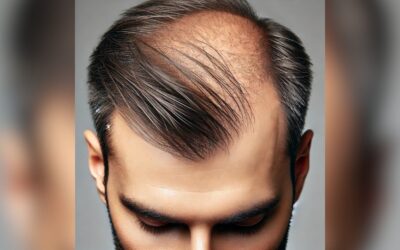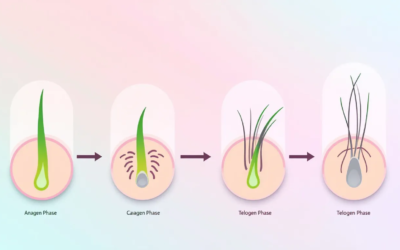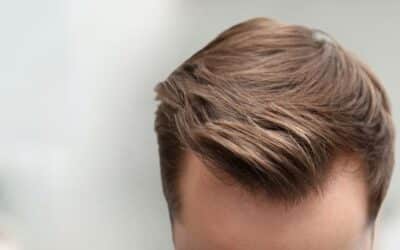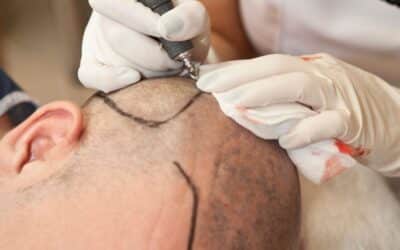
Hair transplant procedures have become a reliable solution for those experiencing hair loss, especially with recent advancements in technology. With robotic systems like ARTAS and NeoGraft being marketed for their precision, many wonder if these options are the best choice for achieving natural-looking results. However, nothing beats the precision and experience of a skilled surgeon. In this blog, we’ll explore why manual hair restoration techniques often outperform robotic procedures and how expertise plays a crucial role in ensuring a successful outcome.
Understanding Hair Transplant Surgery
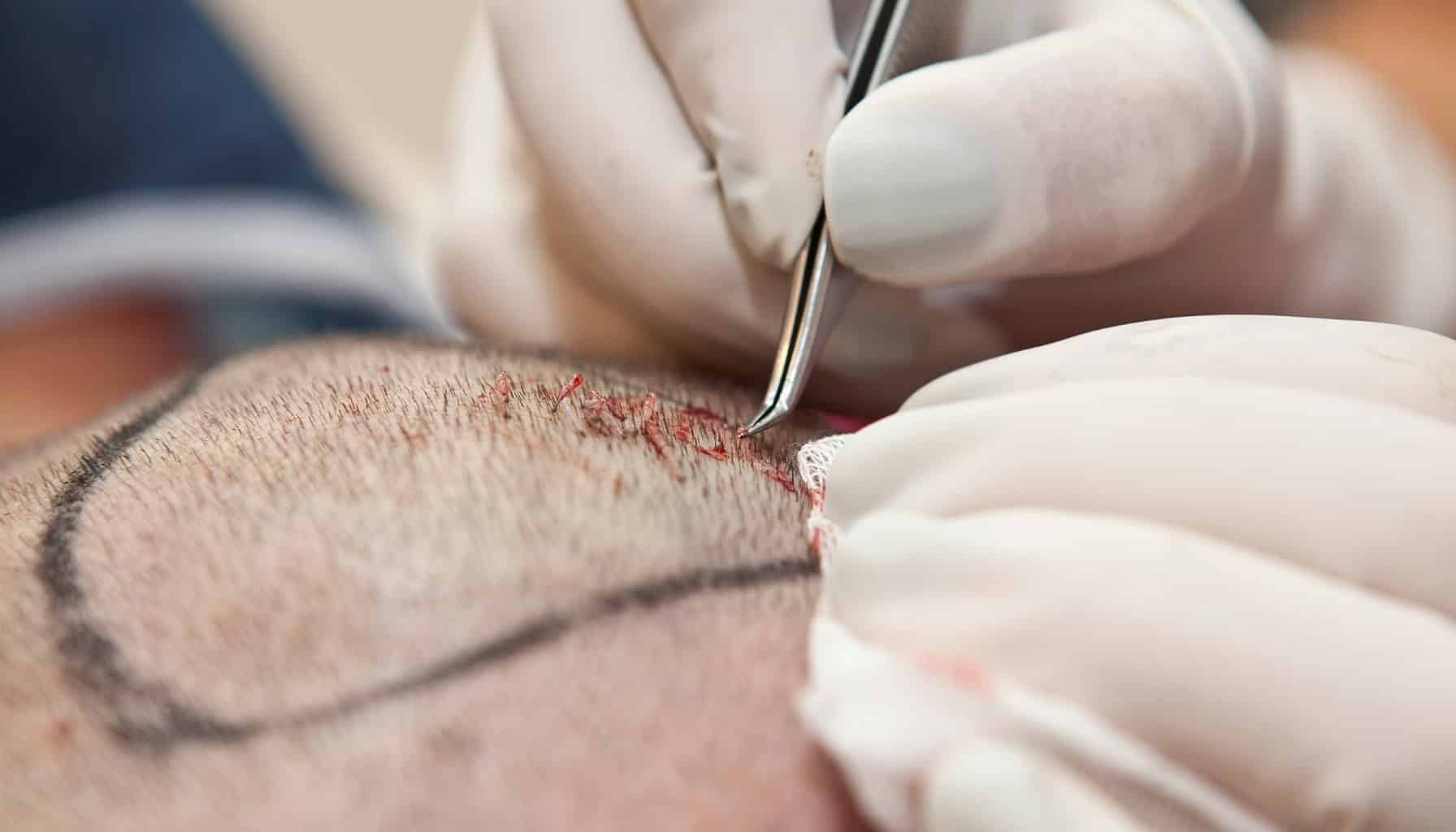
A hair transplant is a medical procedure designed to restore hair growth in areas affected by hair loss. This minimally invasive procedure involves moving hair follicles from one part of the body, typically the back and sides of the head (known as the donor site), to the areas experiencing thinning or baldness (the recipient site). The primary goal of a hair transplantation is to achieve natural-looking hair growth in areas where hair has been lost due to genetics, hormonal imbalances, or medical conditions.
The procedure is usually performed under local anesthesia, ensuring that the patient remains comfortable throughout. During the surgery, follicles are carefully harvested from the donor site. These follicles are then meticulously transplanted to the recipient site, where they will continue to grow and produce new hair. Over time, the transplanted follicles blend seamlessly with the existing hair, providing a fuller and more natural appearance.
There are two main types of hair transplantations: Follicular Unit Extraction (FUE) and Follicular Unit Transplantation (FUT). FUE involves extracting individual follicles directly from the donor site, while FUT involves removing a strip of hair-bearing skin from the donor site and then dissecting it into individual follicular units. Both methods have their unique advantages and are chosen based on the patient’s specific needs and the surgeon’s expertise.
Types of Hair Transplants
When considering hair transplants, it’s important to understand the different types available, each tailored to address specific needs and preferences:
Follicular Unit Extraction (FUE): This minimally invasive procedure involves extracting individual hair follicles from the donor site. FUE is known for its precision and minimal scarring, making it a popular choice for those who prefer shorter hairstyles.
Follicular Unit Transplantation (FUT): Also known as the strip method, FUT involves removing a strip of hair-bearing skin from the donor site. The strip is then dissected into individual follicular units for transplantation. FUT is often chosen for its ability to harvest a large number of grafts in a single session.
Robotic Hair Transplant: This advanced type of FUE uses robotic systems to assist in the extraction and transplantation. While robotic hair transplants offer precision and efficiency, they may lack the nuanced touch of a skilled surgeon.
Body Hair Transplant: In cases where scalp donor hair is insufficient, hair can be transplanted from other parts of the body, such as the chest or beard, to the scalp. This method expands the donor pool but requires careful consideration of hair texture and growth patterns.
Eyebrow Transplant: This specialized procedure involves transplanting hair to the eyebrows to restore or enhance their shape and fullness. Eyebrow transplants are particularly beneficial for individuals with thin or sparse eyebrows due to over-plucking, genetics, or medical conditions.
Each type of hair transplant offers unique benefits, and the choice depends on individual needs, donor hair availability, and the desired outcome.
Indications and Contraindications for Hair Transplant Surgery
Hair transplants are an effective solution for individuals experiencing hair loss due to various factors, but it’s not suitable for everyone. Understanding the indications and contraindications is crucial for determining candidacy.
Indications for Hair Transplantation:
Genetic Hair Loss: Individuals with male or female pattern baldness, a hereditary condition, are prime candidates for a hair transplant.
Hormonal Imbalances: Conditions like androgenetic alopecia, caused by hormonal changes, can be effectively treated with hair transplants.
Medical Conditions: Hair loss resulting from medical conditions such as alopecia areata or scalp injuries can be addressed through restorative hair surgery.
Sufficient Donor Hair: Candidates must have an adequate amount of healthy donor hair, typically from the back and sides of the head, to ensure successful transplantation.
Contraindications for Hair Transplantations:
Active Scalp Infections or Diseases: Conditions like psoriasis or severe dermatitis can complicate the healing process and affect the success of the transplant.
Unstable Hair Loss: Individuals with rapidly progressing hair loss may not be ideal candidates until their condition stabilizes.
Insufficient Donor Hair: A lack of adequate donor hair can limit the feasibility of the procedure.
Unrealistic Expectations: Candidates must have realistic expectations about the results and understand that hair restoration is a gradual process.
Certain Medical Conditions: Conditions such as uncontrolled diabetes or high blood pressure can pose risks during surgery and affect healing.
By carefully evaluating these factors, a hair restoration specialist can determine the suitability of hair transplantation for each individual.
The Hair Transplant Process
The hair transplant process is a multi-step journey that requires careful planning and execution to achieve optimal results. Here’s a detailed look at each stage:
Consultation: The journey begins with a consultation with a hair restoration specialist. During this initial meeting, the specialist will assess your hair loss, discuss your goals, and determine if you are a suitable candidate for a hair transplant. This is also the time to ask questions and set realistic expectations.
Preparation: In the days leading up to the procedure, you will receive specific instructions to prepare for surgery. This may include stopping certain medications, avoiding smoking and alcohol, and following a prescribed skincare routine to ensure your scalp is in the best possible condition.
Harvesting: On the day of the surgery, the donor area (typically the back and sides of the head) is prepared, and follicles are harvested. In FUE, individual follicles are extracted using a specialized tool, while in FUT, a strip of hair-bearing skin is removed and then dissected into individual follicular units.
Dissection: The harvested hair follicles are carefully dissected into individual follicular units under a microscope. This meticulous process ensures that each graft is healthy and ready for transplantation.
Transplantation: The follicular units are then transplanted to the recipient site, where hair loss has occurred. The surgeon makes tiny incisions in the scalp and strategically places each graft to mimic the natural growth pattern of your hair. This step is crucial for achieving a natural-looking result.
Recovery: After the procedure, you will receive detailed post-operative instructions to ensure a smooth recovery. This includes guidelines on how to care for your scalp, medications to manage pain and prevent infection, and activities to avoid during the healing process. Most patients can return to their normal activities within a few days, but full recovery and hair growth can take several months.
The Evolution of Hair Transplant Surgery

Robotic Hair Transplants: Convenience vs. Quality
Robotic systems like ARTAS and NeoGraft are transforming the field of hair restoration by automating parts of the procedure. These systems use artificial intelligence to identify and extract individual follicles from the donor area, aiming for consistency and reducing manual error. The appeal of robotic hair transplants lies in their efficiency; they can complete procedures faster, potentially reducing the overall cost.
However, this convenience comes with trade-offs. While robots offer precision, they often use larger punch tools for extraction. This can lead to more noticeable scarring compared to a manual FUE hair transplant, where a skilled surgeon can choose smaller tools to create a finer linear scar. For individuals who want the freedom to wear shorter hairstyles, minimizing visible scarring is crucial.
Manual Expertise: The Gold Standard for Natural Results
Manual FUE hair transplantation and FUT techniques are still considered the gold standard in the industry, particularly for achieving natural-looking results. A hair transplant surgeon with years of experience has the advantage of adapting techniques during the surgery based on the patient’s unique scalp conditions and hair texture. Unlike robotic systems, a manual approach allows for strategic extraction of donor grafts, ensuring the preservation of donor hair and the long-term health of the scalp.
This level of customization is essential for complicated cases, such as those involving African American hair. African American hair tends to have a curved follicle structure that is challenging for robotic systems to handle. In these cases, a surgeon’s expertise is necessary to follow the follicle’s natural curve, avoiding damage and enhancing hair transplant success rates.
Why Manual Techniques Outperform Robotics in Hair Transplants
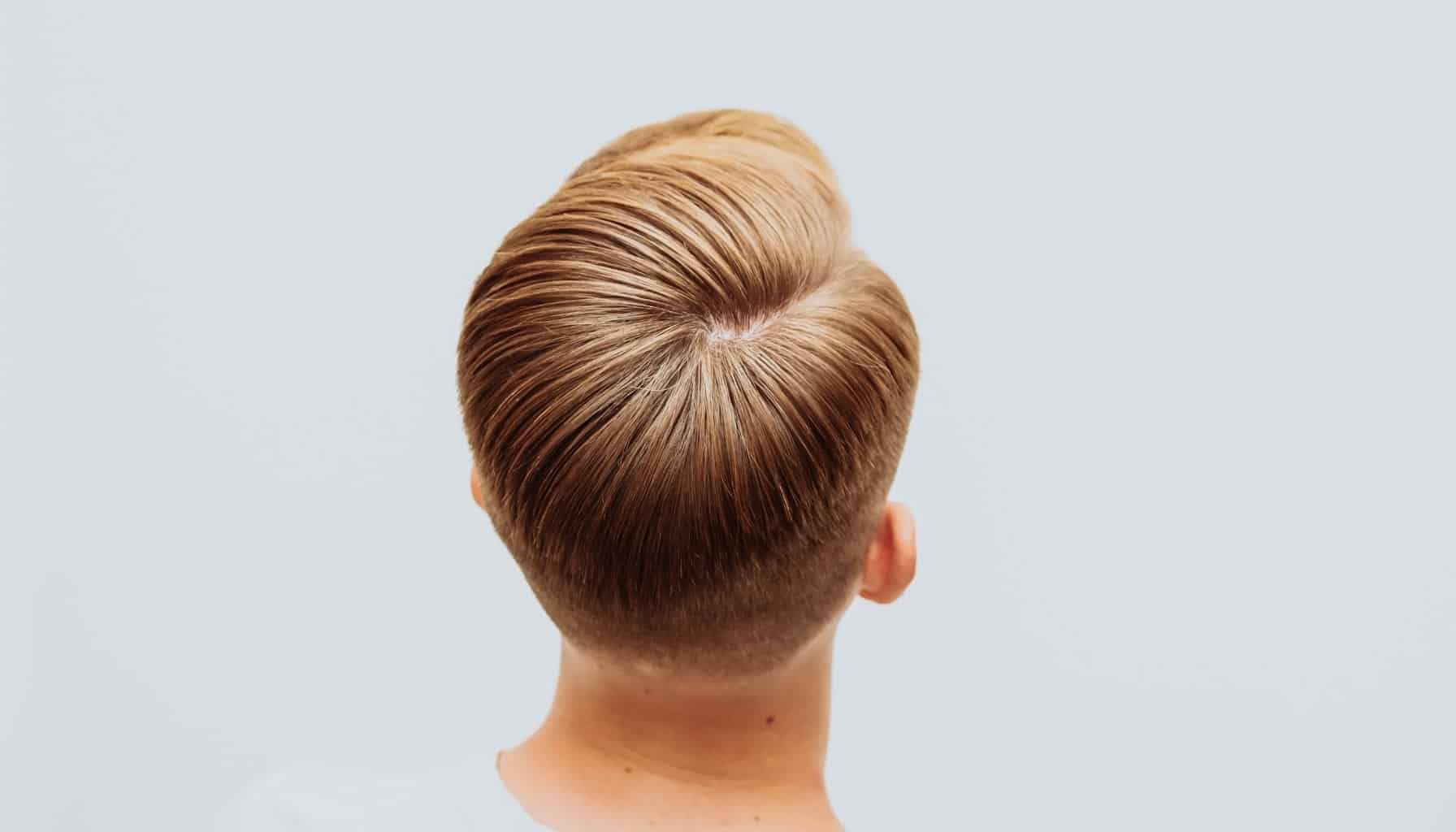
Precision in Hair Follicle Extraction
The extraction phase is critical in determining the success of a hair transplant procedure. Robotic technology uses pre-programmed algorithms to identify the best donor areas, but it can lack the adaptability needed for real-time adjustments. A manual FUE procedure, however, enables the surgeon to make these adjustments on the spot, optimizing the donor site’s health and ensuring a more seamless extraction process.
Reducing Scarring: Smaller Tools, Better Aesthetics
One of the significant advantages of manual techniques is the ability to minimize scarring. Robotic systems, while precise, often utilize larger extraction bits that can leave behind circular scars. An experienced hair restoration surgeon can use narrower tools, resulting in smaller incisions that heal more quickly and with less visible scarring. This makes manual methods preferable for those concerned about the aesthetics of the donor site, particularly individuals seeking a natural appearance with minimal scarring.
Hair Follicle Placement: The Art of Natural-Looking Hairlines
In any hair transplant, the placement of transplanted hairs is vital to achieving a natural look. Manual FUE allows surgeons to strategically position individual follicles in the front to create a softer, more natural hairline, especially in areas affected by thinning hair. Larger groupings of follicular units are placed towards the crown and mid-scalp for density.
Robotic Hair Transplant Limitations: Robotic systems often lack the subtlety to make these distinctions, leading to a less natural appearance.
A skilled hair transplant surgeon knows how to use different groupings of hair to mimic the natural distribution of hair. This attention to detail ensures that the results look indistinguishable from one’s hair, contributing to a higher satisfaction rate among patients.
Challenges with Robotic Hair Transplants
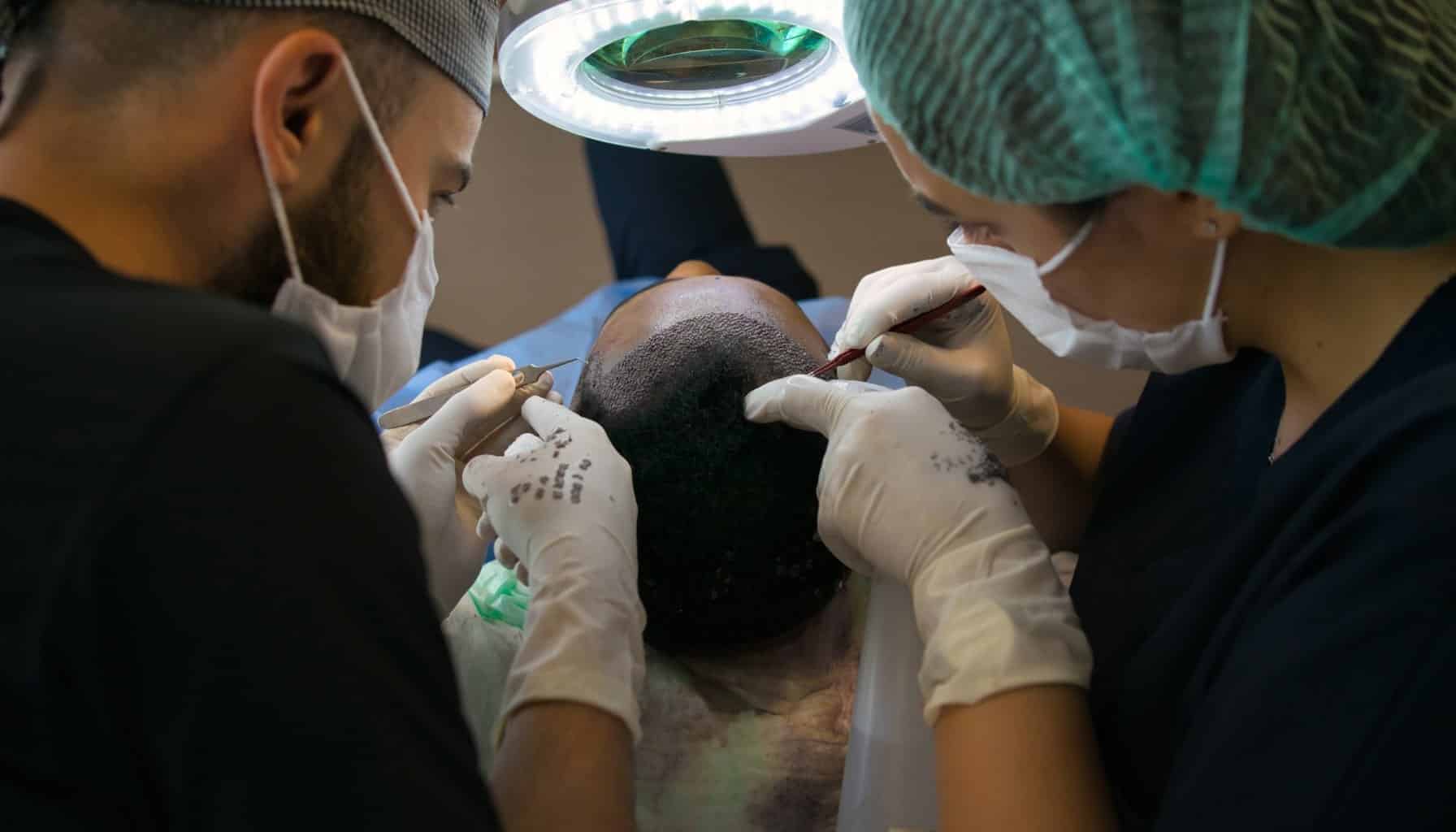
Handling Complex Hair Types: African American Hair
One of the limitations of robotic systems is their difficulty in handling diverse hair types. Female pattern hair loss (FPHL), a common form of androgenic alopecia affecting women, presents unique challenges due to the miniaturization of follicles and typical patterns of thinning. African American hair, for example, often has a naturally curved follicular structure, making it challenging for automated systems to track and extract without causing damage. A manual approach by a skilled surgeon can navigate these complexities, ensuring that the hair follicles remain healthy during the extraction process.
Robotic hair transplants are also not yet fully capable of customizing their approach to fit the specific needs of different ethnicities. Until robotic technology can better address the nuances of hair types like curly or coarse hair, manual FUE remains the best option for achieving natural and long-lasting results.
Over-Harvesting Risks with Robotic Systems
Donor area management is critical in hair transplantation, as the donor site must be preserved for potential future procedures. Robotic systems, while efficient, may not account for the patient’s future needs, potentially leading to over-harvesting. This can result in noticeable thinning in the donor area, affecting the long-term outcome of the transplant.
A hair restoration surgeon, with years of experience in manual techniques, can assess the scalp’s characteristics in real-time and make decisions that prioritize the long-term health of the donor site. This careful consideration ensures that enough hair is preserved for future procedures, maintaining the overall appearance of the scalp.
The Cost Factor: Comparing Manual and Robotic Hair Transplants
Cost Differences Between Manual and Robotic Hair Transplants
One of the main considerations for patients is the cost of a hair transplant procedure. Robotic methods, like those performed with ARTAS, may offer a more budget-friendly option initially due to their efficiency. However, the trade-off can be a higher need for follow-up corrections, which can drive up the long-term cost.
Manual procedures, while often more expensive upfront, tend to offer a higher quality outcome that reduces the need for additional surgeries. When factoring in the quality of the results and the long-term preservation of donor hair, manual FUE and FUT techniques often present a better value.
Assessing Long-Term Satisfaction and Hair Transplant Success Rates
Long-term satisfaction is a crucial factor with hair transplants. Manual methods, when performed by a skilled surgeon, often result in higher hair transplant success rates due to the personalized care and adaptability during the procedure. These factors contribute to a more natural appearance, with a seamless blend between the transplanted hair and the existing hair.
Robotic systems, while accurate, may not provide the same level of customization, particularly when it comes to aesthetic goals. The ability of a surgeon to tailor the procedure to the patient’s unique needs often leads to more satisfied patients who require fewer follow-up treatments.
Healing and Recovery: Manual Techniques Lead the Way
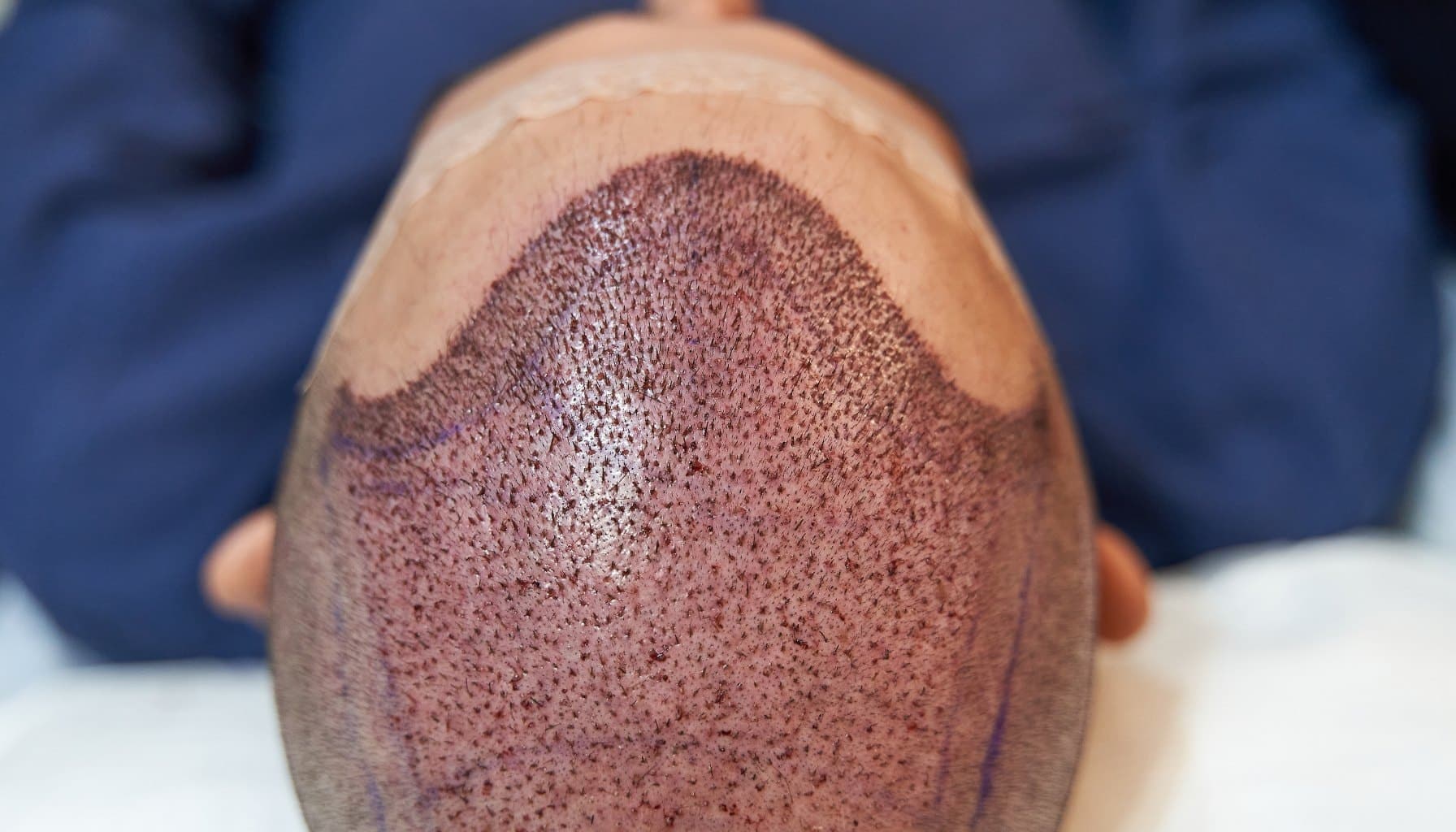
Quicker Recovery with Manual Techniques
Recovery time can significantly impact a patient’s experience with hair transplants. Manual FUE procedures are known for their smaller incisions, which generally heal faster than the larger extraction sites created by robotic systems. This quicker healing time is particularly appealing for those who wish to return to their normal activities without a lengthy recovery period.
Postoperative Care and Minimizing Postoperative Pain
Postoperative care is essential for a successful hair transplant, and this is where manual expertise truly shines. A hands-on approach allows the surgeon to provide personalized aftercare guidance based on the specific characteristics of the patient’s scalp. These tailored recommendations are crucial for minimizing postoperative pain and ensuring a smooth recovery process.
The Role of Medical Therapy in Enhancing Results
Combining manual FUE techniques with medical therapy, such as PRP (Platelet-Rich Plasma) or other bio-enhancements, can significantly improve the health of the scalp and the survival of transplanted hair. These modern enhancements are more effective when paired with manual extraction methods, as they provide a targeted boost to areas that require additional support during the healing process.
Scarring, Aesthetics, and the Importance of Hairline Design

Understanding Different Scarring Patterns
Different hair transplant techniques result in varying types of scarring. In FUT hair transplants, a strip method is used to extract donor hair, which can leave a linear scar. While robotic FUE reduces the need for a long incision, it may still result in noticeable circular scars if larger tools are used. Manual FUE offers the advantage of smaller punch tools, creating fine linear scars that are often barely visible, even in short hairstyles.
Creating a Natural Appearance with Strategic Placement
The ultimate goal of hair restoration surgery is to achieve a natural appearance that blends seamlessly with existing hair. A skilled surgeon’s ability to carefully place hair grafts based on their natural direction, texture, and density is crucial. Robotic systems, while capable of precise implantation, may lack the artistry required for creating a natural hairline.
An experienced hair restoration surgeon understands the intricacies of follicular unit excision and how to manipulate individual follicular units to match the patient’s native hair. This expertise is essential for avoiding the “pluggy” look that can sometimes result from less nuanced robotic procedures.
Conclusion: The Superior Choice for Natural Hair Restoration
While robotic hair transplant systems have advanced the field of hair restoration, they remain tools that require a skilled surgeon’s oversight. For patients seeking a natural-looking, long-lasting solution to hair loss, manual methods still provide the most reliable outcomes. The ability to adapt to different hair types, manage the donor area carefully, and create aesthetically pleasing results makes manual FUE and FUT the preferred choice.
Choosing a clinic with experienced professionals who can blend advanced technology with manual expertise is crucial for achieving the best results. Hair restoration is both a science and an art, and the best outcomes come from those who master both.
Tips for Choosing the Right Hair Transplant Clinic

Ask About Experience: Ensure that the clinic has surgeons with a solid track record in manual hair transplants, especially for complex cases.
Inquire About Scarring: Discuss the size of the extraction tools used and their impact on visible scarring.
Discuss Aftercare: A comprehensive aftercare plan tailored to your hair type can significantly improve outcome quality. Clinics that offer robust aftercare guidance are often more invested in the success of the transplant.
Hair restoration is not merely about achieving thicker hair—it’s about finding the best solution that aligns with your expectations, lifestyle, and future needs. By weighing the benefits of robotic vs. manual methods and considering long-term results, you can make an informed decision that suits your unique situation.

